How to Create a Sales Competency Rating System
Sales performance improvement

A well-defined competency rating system helps sales and enablement leaders establish a clear, objective way to measure and develop selling competencies. The system identifies strengths, pinpoints gaps, and ensures every team member has a clear pathway for growth.
In this article, we'll walk you through the steps to build a robust competency ratings system that aligns with your organisation's goals and enhances your team's success.
Establish a Sales Competency Framework
First things first, make sure you have a clear competency framework for each role in the sales organisation. This framework needs to cover the specific competencies required for success for each sales role - from entry-level SDR, right up to Sales Leaders.
In building out your competency framework, look at it in the context of HOW you are going to use it and rate against it. This enables you to be clear on gaps and development pathways.
Build a Sales Competency Rating Scale
Building a sales competency rating scale requires a clear understanding of how you are going to rate your sales reps against each competency on the framework. We like either a 1-5 or 1-4 rating scale.
If you want a broad brush approach, you could opt for something like:
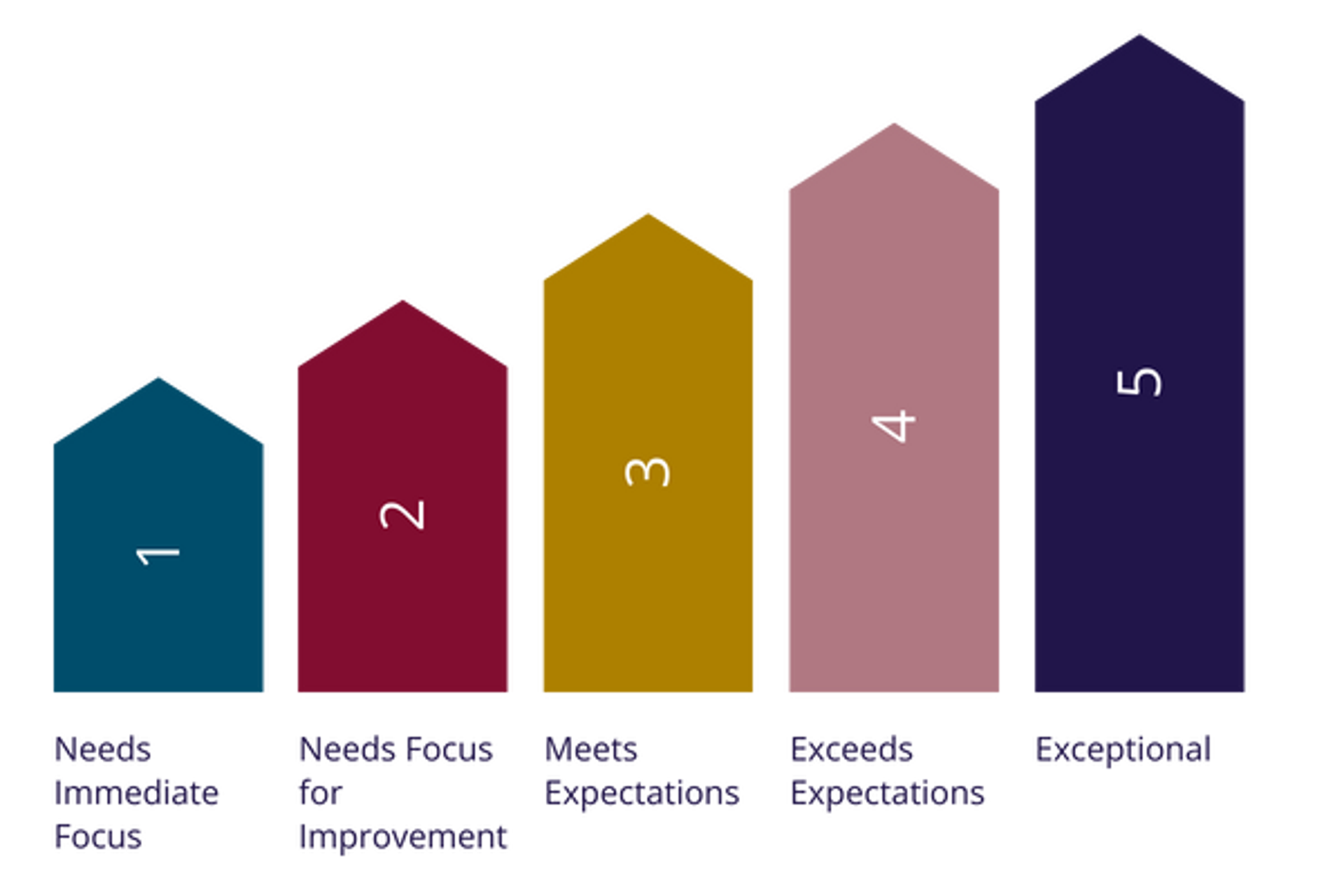
This broad approach is simpler when it comes to defining your competency framework and is best suited to smaller sales teams.
On the flip side, you open this up to more subjectivity on behalf of the Manager and rep.
If you have a lot of new starters or promotions, many of our customers (including ourselves) choose to allow for an ‘unknown’ category in the rating system so you can adapt it to look more like this:
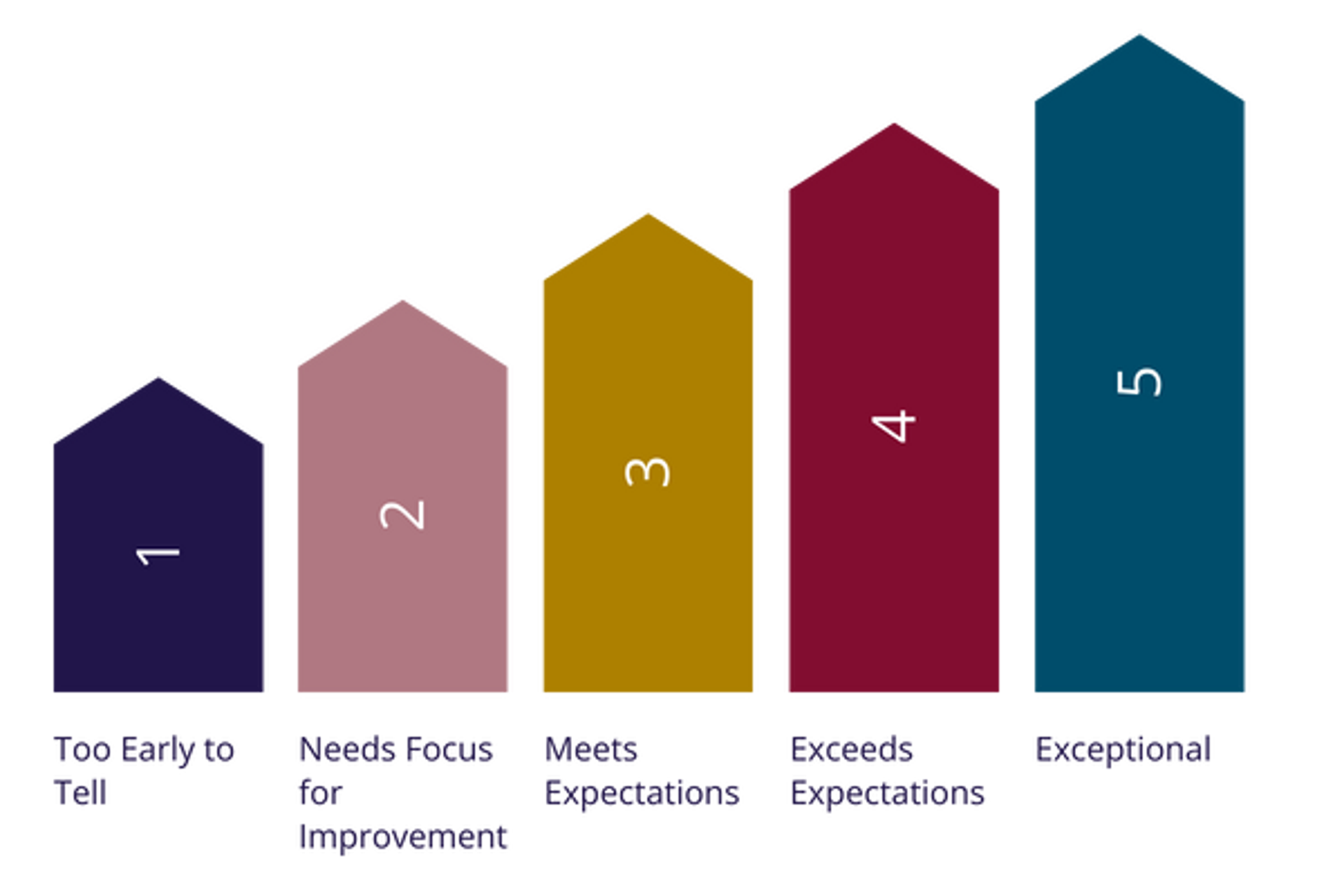
Including a ‘too early to tell’ at the beginning of the scale gives the sales rep and Manager time to build up a bank of evidence while they settle in.
This is much better than just not rating them at all as it gives clarity on their position.
There is much debate on whether it is better to opt for an odd or even number for your rating scale. The premise is that human nature is more inclined to plumb for the middle ground so end up with a lot of 3’s. There’s also the challenge of differentiating between ‘Exceed expectations’ and ‘Exceptional’. If you’d prefer a 1-4 rating scale then we would recommend you simply remove the 5:
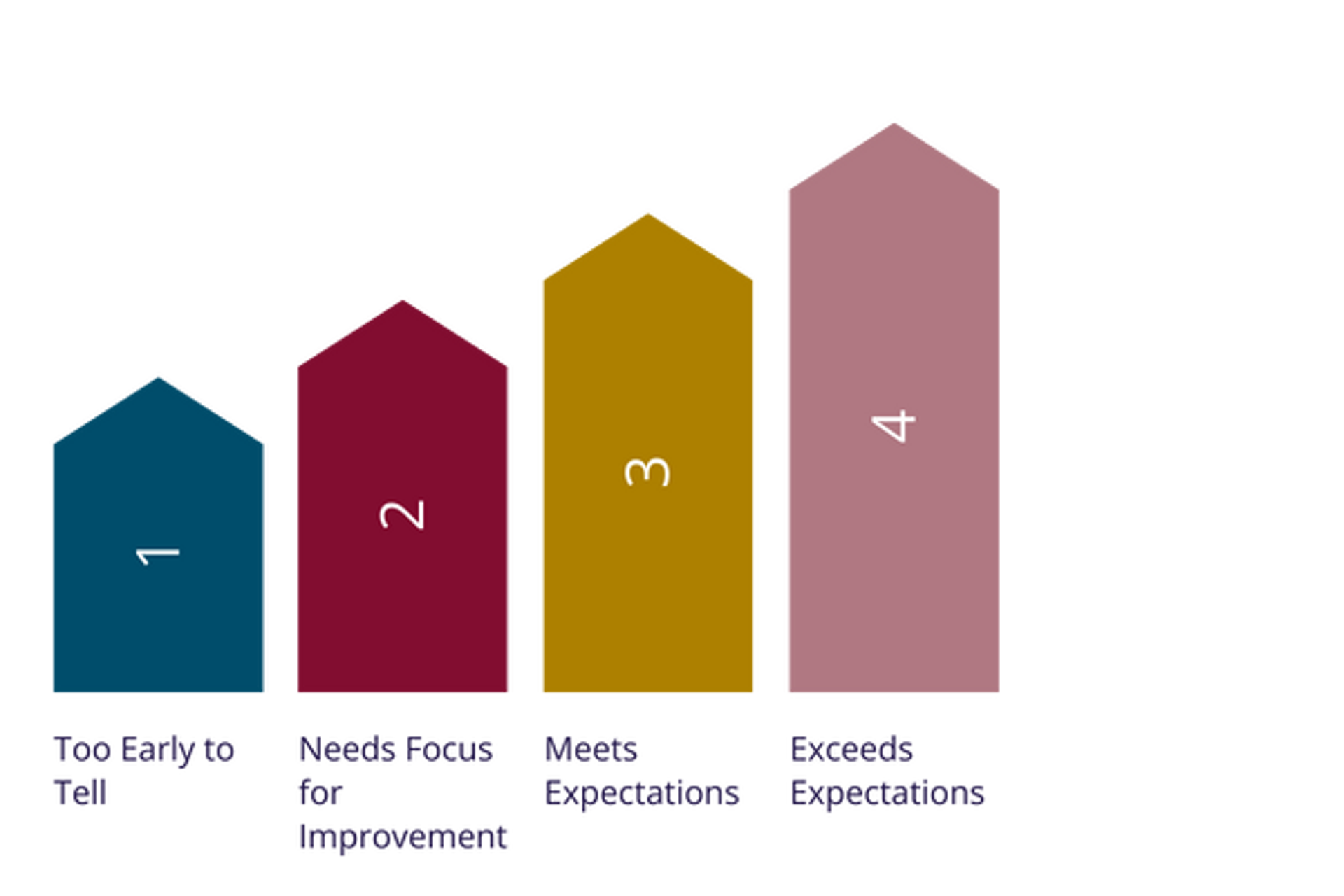
The above simple rating system is a great place to start.
However, remember, what you are looking for when managing competencies and performance is consistency and objectivity.
Therefore, the more guidance you can provide to both your sales leaders and sales reps on HOW they should be rated and what this means, the better.
Instead, you could opt for a more indicator-led guide such as:
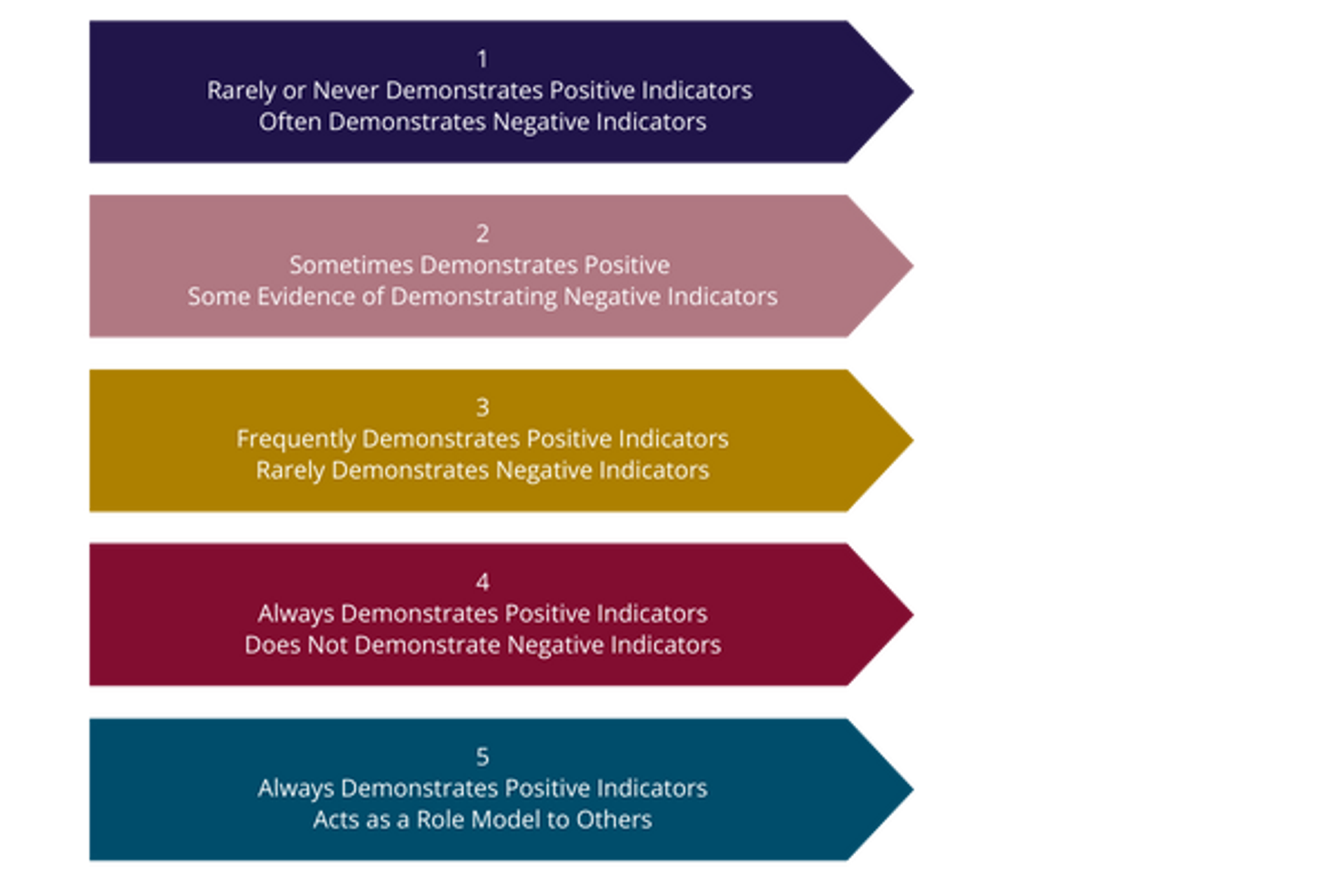
This approach requires a little more thought upfront thought as you need to add indicators to your competencies but it will pay off in greater consistency and objectivity across your sales teams.
This level of guidance for large, distributed teams is essential if you really want this to work as a career progression ladder.
This type of scale needs to be mapped to your competencies and the negative or positive indicators you want your Managers to observe. This will give you consistency and a level of objectivity across your sales teams.
Let’s take “Problem Discovery” as an example competency.
Positive indicators would be:
- Leads with problem questions
- Digs further into the pain to uncover related implications
- Gets the customer to acknowledge the pain
- Achieves a high call-to-meeting or meeting-to-opportunity ratio
Negative Indicators would be:
- Jumps to a solution without understanding customer challenges
- Only asks situational questions
- Does not collect evidence of customer pain or challenges
- Has a low call-to-meeting or meeting-to-opportunity ratio
If you don’t want to use negative indicators then simply adapt it to remove this element to correlate with the positive indicators in your competency descriptions only. Resulting in a ratings scale that looks like this:
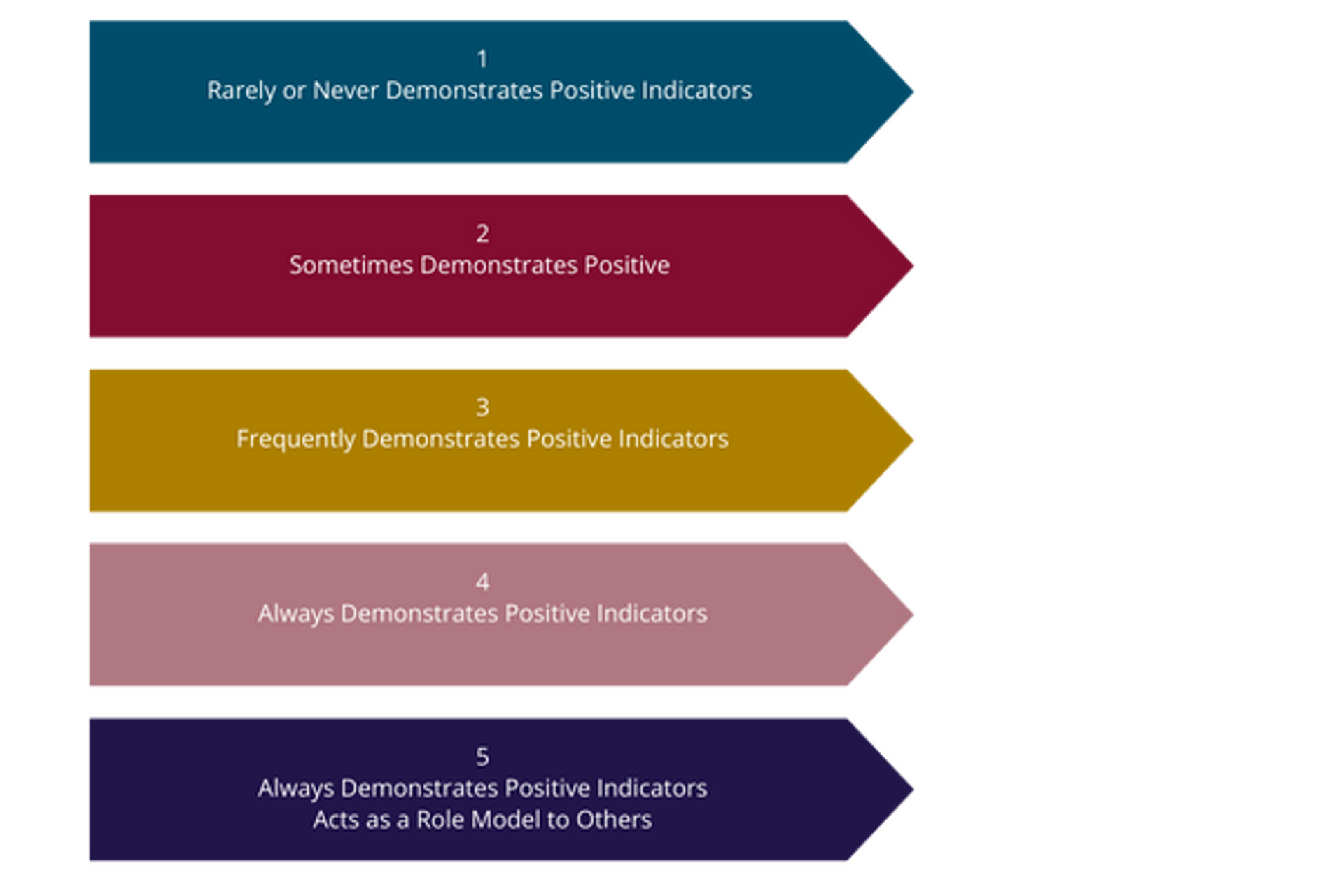
Align Ratings to Job Levels
We often get asked the question of whether the ratings should align with the job role. The short answer is yes, but not perhaps in a direct correlation way. i.e. a rating of 4 does not indicate you are a ‘level 4’ job role in your company. Instead, think of it this way:
The rating is distinct for that job role and that competency.
e.g. If I am an SDR, I can be rated a 5 for the requirements of ‘Problem Discovery’ specifically for my role. When I move the role to a ‘Strategic SDR’, the competency remains the same but the indicators change, therefore my rating is then changes to apply to the new requirements:
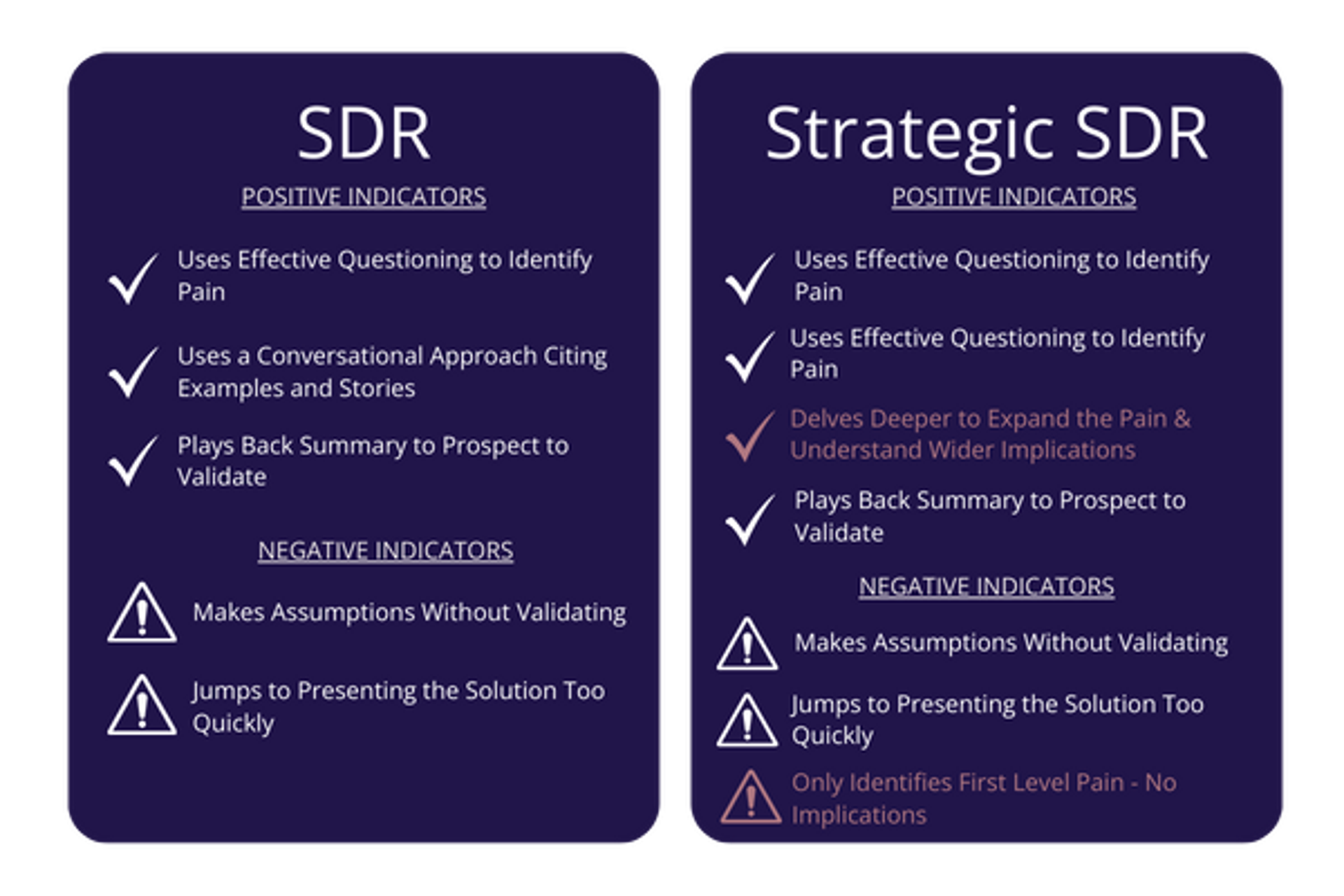
Approaching your ratings by job levels this way has a positive impact on your career progression frameworks.
You can now set minimum ratings to enable you to complete your promotion pathway, e.g. as a current SDR, you must be rated a ‘4’ to be considered for promotion to a Strategic SDR.
Taking the time to build your competency framework and set out the expectations for each role, alongside choosing the right rating system for your business will pay dividends.
You’ll get consistency and a greater degree of objectivity meaning you can scale confidently across the whole team.
You’ll understand exactly where the gaps are and can create structured, automated pathways to support your reps on their development journeys.

White Paper: From Insight to Impact - Harnessing Behaviour Analytics for Sales Growth
Learn how to harness behaviour analytics for sales growth by overcoming the challenge of connecting sales performance metrics to specific behaviours.
DownloadGet industry insights and stay up to date, subscribe to our newsletter.
Joining our community gives you access to weekly thought leadership to help guide your planning for a training initiative, inform your sales strategy, and most importantly, improve your team's performance.















